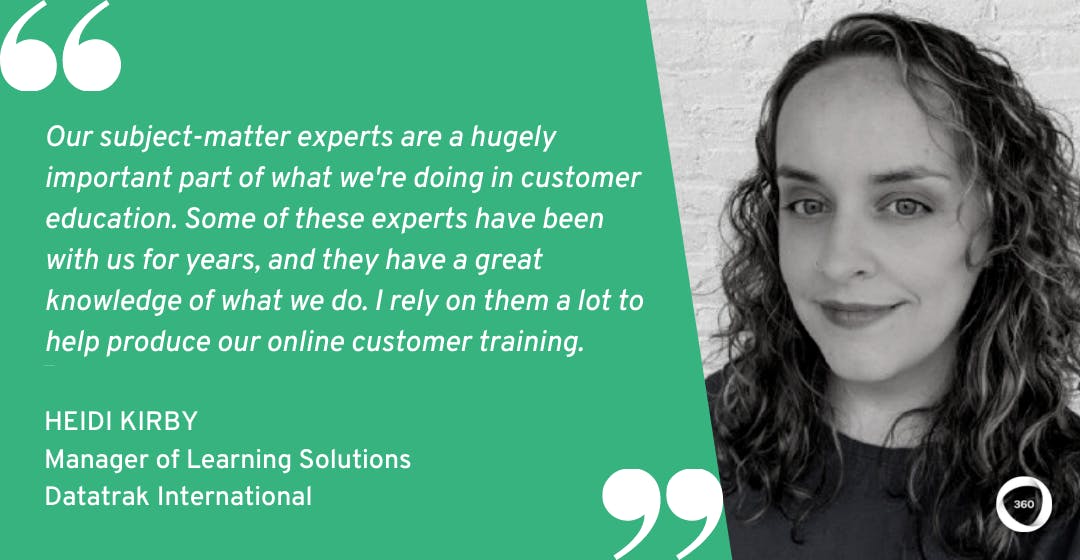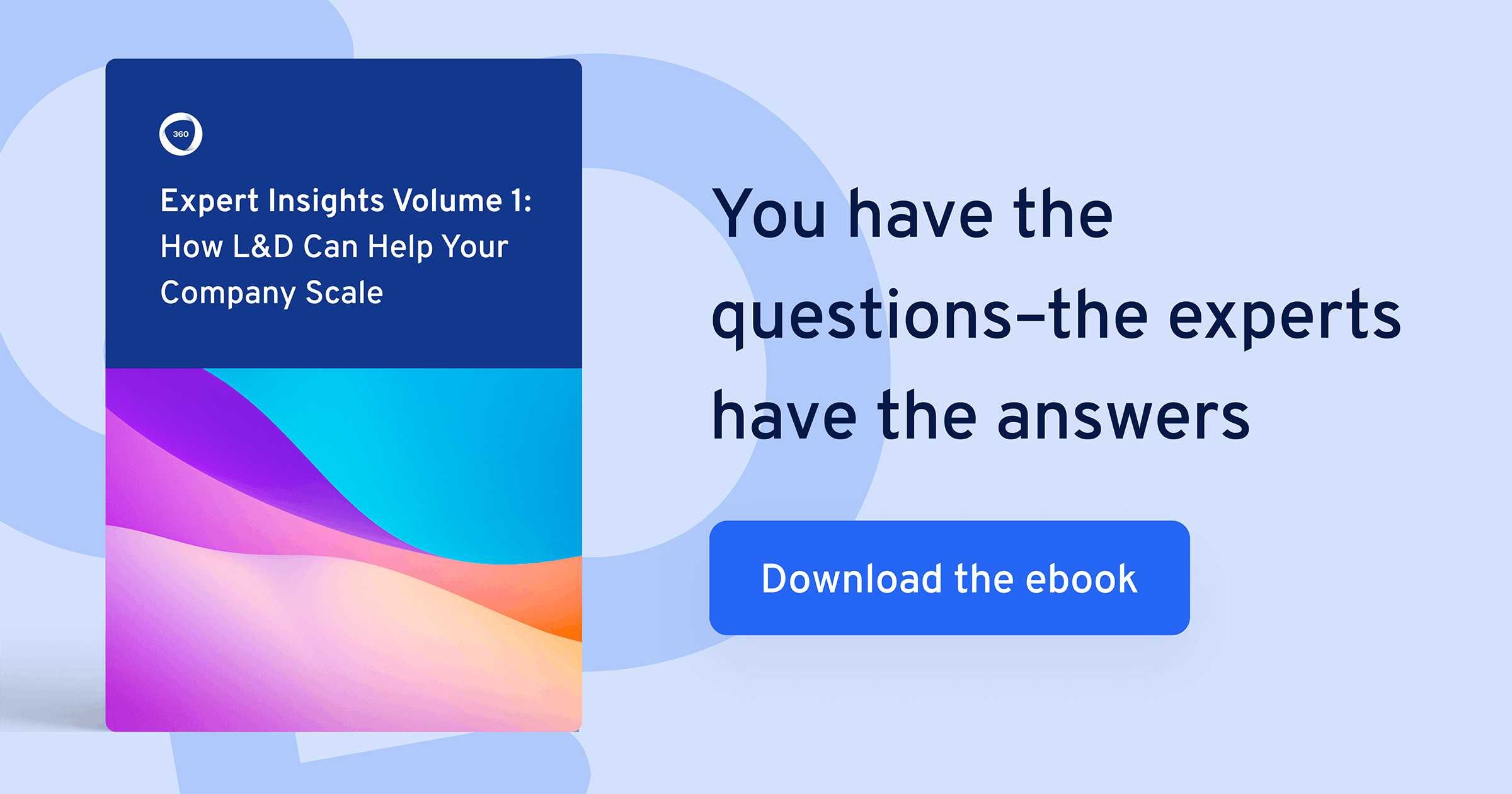
Customer Education Matters: 5 Practical Steps from the Experts to Help Your Clients Level Up
As L&D leaders, we’re all obsessed with delivering the engaging and insightful learning experiences our teams need. One thing we don’t spend enough time thinking about? How to help our clients and customers develop the skills they need to really excel.
This customer education can pose a real challenge for a lot of L&D teams. How can you assess your customers’ learning needs and deliver the resources that suit them best? And how can you ensure a consistent customer learning experience?
As part of our CLO Connect series, we asked customer education experts Heidi Kirby of Datatrak International and Sebastian Skarbek of Greenhouse Software to show us how L&D teams can help clients level up. From sharing subject-matter expertise to staying agile, here are five practical steps to give your customers consistently great learning experiences.
What is customer education, and why does it matter?
Before we dive in, let’s run through a little background: what is customer education, exactly?
Customer education is the process of helping customers learn how to use your products and derive value from them. It helps them get the highest possible value out of their investment.
This typically happens at a number of different stages. When a potential client is considering a number of different products or services, customer education helps them understand the market and make the decision to invest in a particular product–hopefully yours!
Then, once a customer has decided to invest in a product, customer education can help them to understand how to use it, including its capabilities and functionalities, and how it integrates with other products and systems. It’s a key technique to keep customers happy.
But customer education is about much more than attracting clients and preventing churn. It also enables stronger client relationships, ensures a better quality of customer service, and helps you find new ways to meet market demands and expand your customer base.
With all that in mind, here are five practical steps from customer education experts Heidi Kirby and Sebastian Skarbek to help your clients level up when using your products. First up, a fundamental tip: sharing your subject-matter expertise with customers.
Customer education is the process of helping customers learn how to use your products and derive value from them. It helps them get the highest possible value out of their investment.
Need a few more CLO Connect expert insights? Find out How L&D Can Help Your Company Scale
#1: Share your existing subject-matter expertise with customers
One of your greatest L&D resources is your internal subject-matter expertise. But this expertise isn’t just helpful for your teams to learn new skills and capabilities–it’s also a fantastic resource for your customers and clients, too.
“Our subject-matter experts (SMEs) are a hugely important part of what we’re doing in customer education as part of the Learning Solutions team,” says Heidi. “Some of these experts have been with us for years, and they have a great knowledge of what we do. I rely on them a lot to help produce our online customer training.”

By leveraging your internal subject-matter expertise with customers, you’re helping them to understand your product in much greater detail, and strengthening client relationships while you’re at it. All you need is the right content.
But where should you get started with developing this content? Sebastian has a helpful tip.
Related: Experts Engagement Tool: Leverage Subject-Matter Expertise with Collaborative Learning
#2: Partner with other teams to develop great content
For Sebastian, great customer education is all about knowing who to partner with to produce the right content. And at Greenhouse Software, one team stood out above the rest.
“In the Customer Education team, we found a natural partner in our Customer Marketing team,” he says. “Their mandate is to establish best practice guidance and solutions for our customers through webinars and case studies. Then, we can develop tactical applications of best practices for using our platform. Our natural content vehicles are eLearning courses and videos.”
As Sebastian explains, this partnership allows each team to focus on what they do best. “Our Customer Marketing team is a little bit more aspirational about showing what’s possible, whereas the Customer Education team needs to be more direct in highlighting and explaining specific steps within the platform.”

Even if your organization doesn’t have a dedicated customer marketing team, partnering with your product marketing team is still a great way to get started with customer education. But to really get things underway, you need the right tools–including a digital platform.
#3: Migrate your customer education efforts to digital platforms
While customer education is distinct from wider organizational learning, it shares one key similarity: delivering the right learning experiences to clients takes the right digital platform.
For Heidi at Datatrak International, hosting customer education resources on a digital learning platform was a must. “We’re migrating our high-level standardized customer training onto a digital platform,” she says. “This way, we can save everyone some time, and let people get back to what they were hired to work on.”
By consolidating your customer education resources in one place, you can also bring a greater level of consistency and predictability to the client learning experience, too. And when it comes to consistent learning experiences, our experts have one more tip: structure and branding.
Related: What Are Learning Management Systems, and How Do You Choose One?
We’re migrating our high-level standardized customer training onto a digital platform. This way, we can save everyone some time, and let people get back to what they were hired to work on.
#4: Structure and brand your customer education resources
As you’re getting your customer education efforts up and running, there’s one particular technique that will help create distinctive and impactful learning experiences.
“We want to create a greater focus on consistent branding and structure within our customer training,” says Heidi. “I’d like to bring a distinctive feel to our training, and a greater element of standardization. This will also help us to create content faster, because people don’t have to start from scratch when they’re building a new course.”
This consistency in customer education resources is something Sebastian is focusing on, too. “One of the key benefits we’re seeing in the Customer Education team so far is a greater continuity in our approach, and more consistent messaging.”
“For example, if we’re using a five-point framework in Customer Education to describe something to a client, I know that Customer Marketing will be working from the same material.”
Alongside this structure, our experts also have one last tip to offer: try to stay flexible.
We want to create a greater focus on consistent branding and structure within our customer training. I’d like to bring a distinctive feel to our training, and a greater element of standardization.
#5: Stay flexible and adjust your approach as you go
Don’t get us wrong–structure and consistency is key in customer education. But as Sebastian says, it’s equally important to stay flexible and open to new ideas.
“Being collaborative and staying open to new perspectives is really key in customer education,” says Sebastian. “It’s important to stay flexible and agile, and not get too attached to specific ideas. We need to prototype and test ideas very quickly to achieve the best result.”
But how does Sebastian achieve this balance between structure and flexibility in practice? “It’s crucial to be organized in customer education,” he says. “I rely heavily on my ability to take abstract concepts and ideas and present them in a clear way to the folks I’m collaborating with. This could be in a course outline, or it could be in a diagram or a visual.”
Related: Pivoting to Agile Learning Could Revolutionize Your Learning Culture
Transform your customer education with these 5 key steps
Right now, customer education is more important than ever. L&D teams everywhere need to be thinking about how they can deliver consistently compelling learning experiences to help build closer client relationships and maximize value for their customers.
So, consider these 5 key steps, and think about how you could improve your customer education to help every one of your clients get the most out of their investment.
And if you’re looking for more inspiration on how to support your customers with great learning, our #CLOConnect interview series has got you covered. Each week, I interview a new L&D leader to find out how they’re driving better learning outcomes by connecting their teams and unlocking subject-matter expertise. You can subscribe (below 👇) to our weekly newsletter to receive our latest posts directly in your inbox.
Thanks again to our two L&D experts, Heidi and Sebastian, for their generous introductions to the exciting world of customer education!


